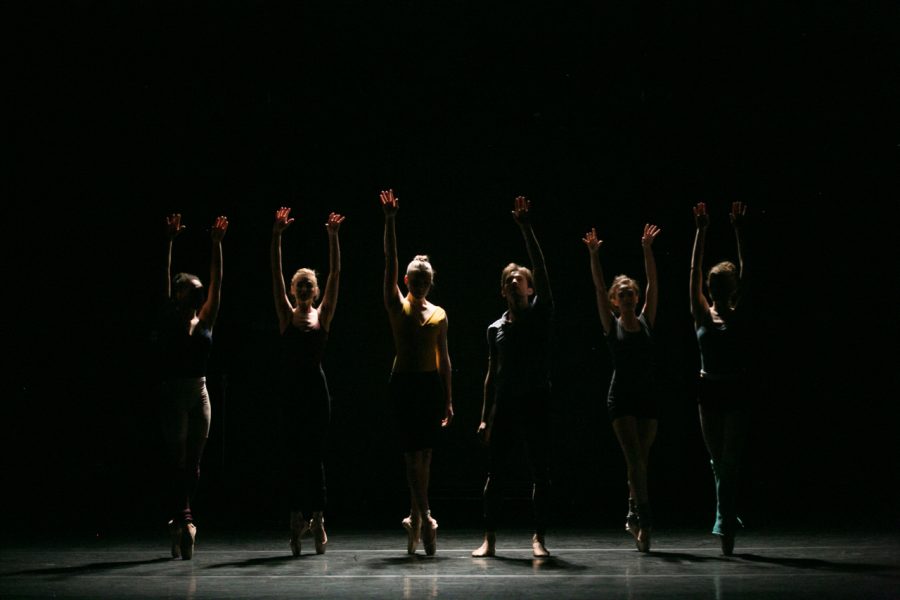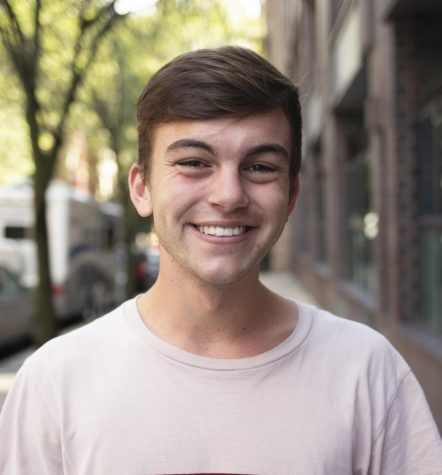BalletCollective Goes Bigger, Better
BalletCollective pushed the boundaries of the classical art form in its dynamic and atmospheric performance on the 27th of October.
October 31, 2016
In an effort to take ballet from the stereotypically archaic to the forefront of artistic development, BalletCollective has been expanding greatly upon the visual and performing elements of the classic style. Founded in 2010 by Troy Schumacher, the Collective is comprised of contributing artists, composers and residential dancers from the New York City Ballet.
From the moment the show began on Oct. 27, feats of human athleticism ensued. Costumes and scenery were stripped, exposing the audience to the raw music and dancers.
The evening revolved around three collaborative world premieres: musical compositions by Ellis Ludwig-Leone and Judd Greenstein; art by James Ramsey, Carlos Arnaiz and Paul Maffi; and choreography by Troy Schumacher.
“Until the Walls Cave In,” the first piece, began with choreography in total silence and eerie lighting. However, as soon as soloist Lauren King burst onto stage and landed her assemble en tournant, the music and lighting exploded into action.
Similar to Schumacher’s 2014 breakout piece, “Clearing Dawn,” the motifs of the ballet were camaraderie and friendly competition. The dancers were frequently upstaging each other by one-upping their companions or mimicking a certain move. The second piece, a pas de deux titled “The Answer,” also experimented with onstage playfulness.
The relationship between dancers Anthony Huxley and Rachel Hutsell was very flirtatious in the way they tried to simultaneously outdo and impress one another. Additionally, Hutsell, the youngest dancer with BalletCollective, was a standout on Thursday with her youthful athleticism and noteworthy saut de chats.
The final piece, “Invisible Divide,” was the best of the night. The audience may have come for the dance, but they left with the futuristic performance of Hotel Elefant and Vanessa Upson resonating in their heads. Here, Harrison Coll was another standout dancer, who danced with such intensity and wild abandon that he left the stage breathing heavily enough for the audience to hear.
While the evening showcased fresh and exciting innovations in dance, art and music, the real delight was seeing George Balanchine’s legacy shine through the dancers’ movement. For Balanchine, the founding artistic director of the New York City Ballet, everything on stage was bigger and faster. High legs, powerful leaps and never ending pirouettes dominated the show.
Seasoned principals like Lauren Lovette and Anthony Huxley exemplified these movements with their fluidity and effortless movement.
This style was also prominent in the music and choreography. The violins in Greenstein’s “The Answer” alluded to the score of Balanchine’s 1972 “Stravinsky Violin Concerto.” The flirtatious and competitive nature in “The Answer” paid tribute to “Duo Concertant” and the final movement of “Western Symphony.” The tuck jumps and angular arms in “Until the Wall Caves In” referenced “Symphony in Three Movements.”
BalletCollective not only presented something new to the audience, but also something old. While introducing new works from aspiring artists, it also paid tribute to ballet’s classic, timeless beauty.
A version of this article appeared in the Monday, Oct. 31 print edition. Email Ryan Mikel at [email protected].


























































































































































